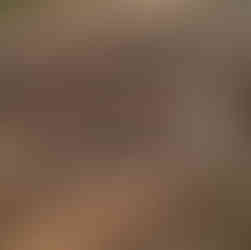
Events Programme - August 2024
Please note that the Wanderers' Walks in August are on the first and second Tuesdays, not our usual first and third Tuesdays.
6th August - Wanderers’ walk.
Meet at the Bellringer pavilion at 10:30.
Alan Metcalfe will be highlighting the variety of trees the Park.
8th August - Committee meeting
13th August - Wanderers’ walk.
Meet at the Zoo car park at 10:30.
We will be visiting the Zoo for a walk and tour with Eve Cozzi, Zoo Lead. Please note Eve contributes to our monthly blog – you may have seen her articles.
22nd August - Evening Meeting
Citizens Advice Bureau, next to the Y.M.C.A. - 7pm.
Speaker - Elise Smith
Recently returned from an excursion to Iceland, Elise will introduce us to the topic of “Iceland plants”

Refurbished Boat Shed Bridge.
Review of July's Events
Wanderers' Walk, July 2, 2024
Lead - Mieke Verschoor
20 brave souls and a very flirty piwakawaka gathered at the Envirohub today. Despite the intermittent light showers, we were able to enjoy a very informative tour taken by Mieke Verschoor of Sustainable Taranaki.
The Envirohub is a work in progress and demonstrates methods of composting, worm farming, bokashi and so many more sustainable gardening and waste reduction methods. I was particularly fascinated with the spiral herb garden which is in process of being concreted – the concept of the planting system in the spiral makes so much sense!
All structures are made from recycled or donated materials – there’s no need foreseen for monetary input.
Mieke holds workshops for groups wanting to learn more. I feel we were very fortunate to be able to hear about her pratices today.
Handouts from her sessions will be made available to you, along with a feedback form for those who attended.
The Envirohub is open 31/2 days per week – and when open, visitors are most welcome
Sue Matehaere Patten
Below are four composting handouts supplied by Mieke.
Click on the picture to see a slideshow of the entire pamphlet.
Composting ABC's (click on picture to see slide show)
Your Guide to Composting (click on picture to see slide show)
Your Guide to Bokashi Composting (click on picture to see slide show)
Your Guide to Worm Farming (click on picture to see slide show)
Staff Lunch, July 10, 2024
Thank you for a wonderful lunch and the opportunity to talk with you all. The staff look forward to this luncheon every year and it’s talked about for weeks before.
Pukekura Park curator - Sheryl Clyma
Buggy Driver's Lunch, July 16, 2024
July has been a busy month for our volunteers.
As part of Volunteer New Plymouth Citizens recognition awards, the buggy drivers at the Park recently received certificates and generous vouchers (via Volunteer NP) for White Pear café, donated by Westwill Properties. Although no prize as such was won, recognition was acknowledged, and appreciated.
A buggy drivers morning tea was held at White Pear café last week to celebrate and to have a rare catch up together as a group.
We have 5 new drivers so it was a good chance to meet each other on an informal basis. It was an opportune time as the buggy was having repairs which meant everyone was available.
The morning tea was much appreciated and enjoyed by us all.
First Aid Training, July 24, 2024
A First Aid training session for volunteers was held at Hato Hone St John - 3 Steps for life session – focusing on CPR and the use of a defibrillator.
It was really informative, practical and gave all of us a little more confidence I’m sure. Fear of the unknown… has hopefully passed slightly!
The 11 volunteers who attended all spoke of an increased awareness and understanding.
Having some skills such as these may come in handy when volunteering in such a public place as our Park, or for life in general.
A special thanks to Rebecca and Ashley from Hato Hone St John.
Evening Meeting, July 25, 2024
Speaker - Sue Matehaere Patten
After a quick committee matter Sue presented an amazing slide show highlighting gardens and points of interest that she visited while on her recent trip to Japan. What a treat to see such beautiful photos of meticulous gardens, with trees and shrubs all pruned to perfection. Unfortunately the blossoms had arrived early and finished by the time she arrived, but Japan is not all about Cherry Blossoms with many parks and loads of history. Thank you Sue for taking the time to put together the photos and information to share with us. It gave us a great insight to some of the places of importance in Japanese history, like Hiroshima Peace Memorial Park and Atomic Bomb Memorial Mound, Osaka Castle with the moat around it, The giant Reclining Buddha Statue, Itsukushima Shrine which appears to be floating in the sea, to name a few.
Also big thank you to Nicola for the tasty supper treats.
Brooklands Zoo
The zoo experience: connecting people with nature
by Maxine Jenkins, Brooklands Zoo Coordinator
“No one will protect what they don’t care about; and no one will care about what they never experienced” David Attenborough
Education has always been one of the key factors of why good zoos exist. For a growing number of children (and adults), they are disconnected from nature, only getting to experience it from the pages of a book or a tv screen. Each year, over 22 million people visit accredited Zoo and Aquarium Association (ZAA) welfare accredited Zoos in Australasia, and Brooklands Zoo had the opportunity to create connections with over 136,000 of those visitors in 2023.
In 2023, zoo staff delivered 621 free daily keeper talks. These talks occur twice daily at 12pm and 2pm. The zoo also offers schools and groups the ability to book private educational talks where they can choose the subject of their talks and any areas they may be particularly interested in. Popular topics are habitat design, animal behaviours and species-specific adaptations. One high school has been studying the behaviour of our troop of capuchins for many years and love returning each year to see what changes have occurred. Of the 51 talks given to approximately 1,386 children from school groups in 2023; 70% of groups chose to learn about exotic mammal species, 14% learnt about our heritage breed farm animals and the remaining 16% split between birds, native species, and reptiles.

Talks are given by keepers who work with the species chosen and can give a personal insight to each individual, creating bonds through visitors being able to learn names, family connections, favourite foods and personal quirks and children return frequently to visit the animals they feel particularly close to. Some favourite facts include the fact that while squirrel monkeys love eating insects, they absolutely hate snails and will sit far away from them until keepers remove them from their habitat. Cotton top tamarins on the other hand adore snails, often getting covered in green foamy slime which they seem to enjoy flicking off onto their keepers. If you are part of or know of a group keen to learn more, head to the Brooklands Zoo website to book your own educational talk.

Otter day talk
Friends of Pukekura Park Membership Application Form
To apply for membership, either click on the link to our website page or download a pdf application form
Copyright © 2024 Friends of Pukekura Park, All rights reserved.
Our mailing address is:
Friends of Pukekura Park
PO BOX 484
New Plymouth, Taranaki 4340
New Zealand



























































































































































































